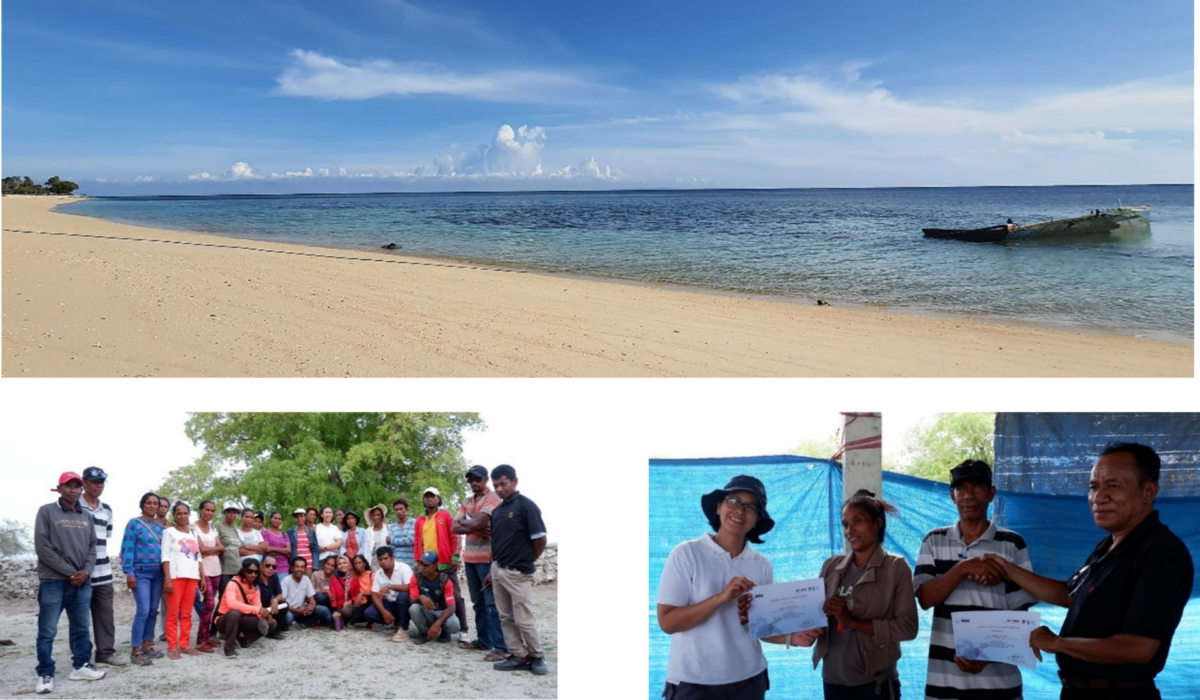Timor-Leste had just celebrated its Independence Day the day before the nation’s first ever sea turtle training session, which was hosted on 29 November 2022. It was a nice, sunny day in Com Village, Lautem Municipality, Timor-Leste. The heat did not seem to dissuade participants from joining the training, which was held in a semi-outdoor venue.
The training was attended by a total of 37 participants, the majority of whom were women (21 women and 16 men). Over the course of two days, this group learned a great deal about sea turtles – from their status in the Arafura and Timor Seas (ATS) region, to their biology and ecology, anatomy and morphology, ecotourism, hatcheries and bycatch handling. Most of the participants were members of the Com Conservation Group under Nino Konis Santana National Park; three PROSPEK staff, along with a local NGO commissioned by the National Coordination Unit of Timor-Leste to assist the Com Community, also joined the training.
Prior to the training and despite their limited knowledge, the conservation group had been striving to save sea turtles in their region by relocating and monitoring eggs, in a bid to ensure no poachers could take them prior to hatching. As a result of their efforts, this group has already had some notable success. Between April and August 2021, they recorded a total of 26 nests relocated and, subsequently, 450 hatchlings were successfully released into the sea.
Dwi Suprapti, a sea turtle expert from Indonesia with more than 15 years of experience working with and conserving sea turtles was the main trainer. To provide all attendees with a clearer understanding of the various marine turtle species, she first confirmed the identities (including local names in the Fataluku dialect) of four sea turtles known to nest on Com beach. These are the olive ridley (sapa), green (punator), hawksbill (keremval) and leatherback (kelempeli). She then presented small replicas of those four turtles to highlight the differences in appearance.

Prior to this point, most members of the conservation group had relied on practical experience (i.e., ‘learning by doing’) for their understanding of turtles in the region. They were especially grateful to be able to spend time in the company of a scientific expert, so they could support this practical experience with more technical knowledge. Many questions were asked, as they collectively sought to gain a clearer understanding.
In one example, Mr. Lucas Monteiro, the secretary of the conservation group, breathed a sigh of relief after it was confirmed that he needed to change the sand after the eggs hatched to avoid the growth of bacteria – the presence of bacteria can lower the hatching success rate, as explained by Suprapti. This was corroborated by Raul Pereira Mendes, the head of the conservation group, who had noticed in the course of their operations that if they used the same sand, it became slimy and resulted in a lower number of successful hatchlings.
The training was a crucial first step towards sea turtle conservation in Com Village. Many additional developments will be required in future, to help the group function to its optimum capacity. First and foremost, the group needs to apply for and obtain legal recognition; secondly, another training session relating to sea turtle monitoring during nesting season would help to develop their understanding of nesting trends in Com; and third, a process of raising awareness and socialisation needs to be conducted, so that villagers in Com and its neighbouring areas can understand that sea turtles are fully protected and cannot be harvested.
To support this process, and as part of ATSEA-2’s wider commitments to facilitate community-led conservation in the ATS region, the Program will collaborate closely with PROSPEK in support of Com Conservation Group, so they can conserve and utilise their marine and coastal environment in a more sustainable way.
By Casandra Tania


